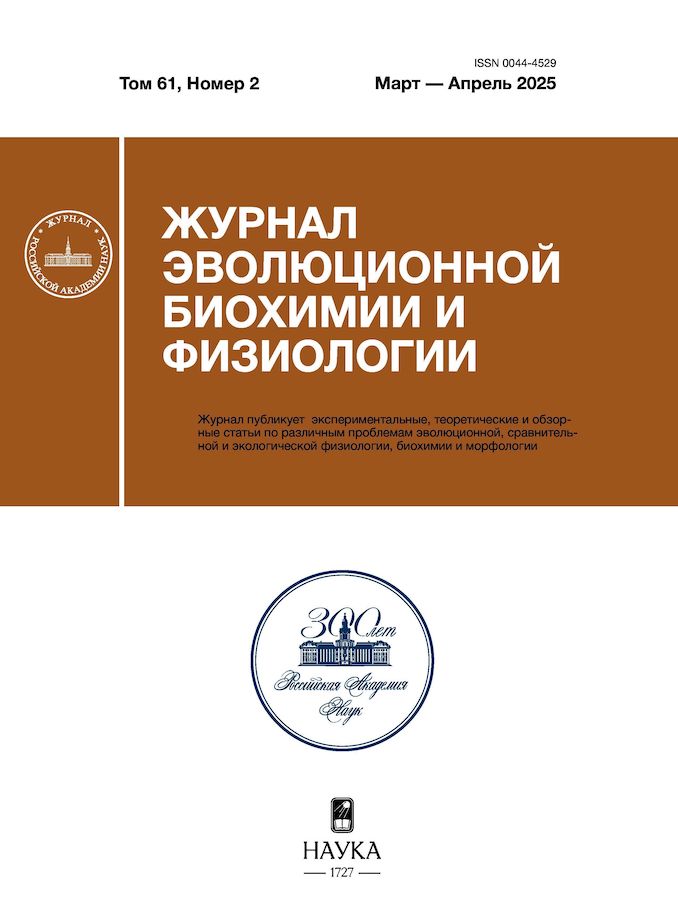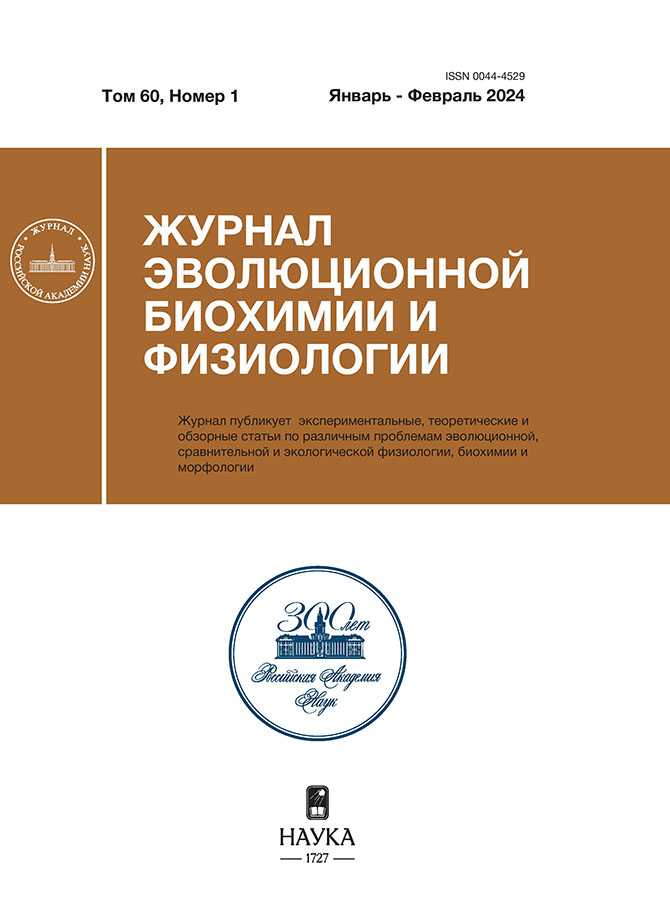Влияние условий сотрудничества на амплитуды вызванных потенциалов при творческой и нетворческой деятельности
- Авторы: Нагорнова Ж.В.1, Шемякина Н.В.1
-
Учреждения:
- Институт эволюционной физиологии и биохимии им. И.М. Сеченова РАН
- Выпуск: Том 60, № 1 (2024)
- Страницы: 105-113
- Раздел: ЭКСПЕРИМЕНТАЛЬНЫЕ СТАТЬИ
- URL: https://cijournal.ru/0044-4529/article/view/648099
- DOI: https://doi.org/10.31857/S0044452924010088
- EDN: https://elibrary.ru/ZFJYHO
- ID: 648099
Цитировать
Полный текст
Аннотация
Данная работа является продолжением ряда работ по исследованию влияния условий социального взаимодействия (соревнования или сотрудничества) на мозговые корреляты вербальной творческой деятельности. В работе рассматривается модель сотрудничества, в которой участникам ставилась задача вместе, хотя и не совещаясь, придумать как можно больше ответов в творческом и нетворческом заданиях. Испытуемые (4 мужчин, 26 женщин) выполняли два типа заданий индивидуально и в условиях сотрудничества в парах (мужчина-мужчина, женщина-женщина): творческое – придумать необычное использование повседневного предмета, и нетворческое – перечислить предметы из предложенных категорий. Сравнивали вызванные потенциалы (ВП) в каждом из заданий между условиями сотрудничества и индивидуального выполнения. Условия сотрудничества приводили к уменьшению амплитуды компонента P200 на временном интервале 148–272 мс от начала предъявления стимула как при творческой, так и при нетворческой деятельности, свидетельствуя о снижении внимания к стимулу в условиях социального взаимодействия. При выполнении творческого задания наблюдается бо`льшая амплитуда позднего позитивного компонента на интервале 662–1240 мс – в задневисочных и затылочных отведениях, что может отражать активацию височно-теменного соединения, вовлеченного в процессы “понимания другого”.
Полный текст
Об авторах
Ж. В. Нагорнова
Институт эволюционной физиологии и биохимии им. И.М. Сеченова РАН
Автор, ответственный за переписку.
Email: nagornova_zh@mail.ru
Россия, Санкт-Петербург
Н. В. Шемякина
Институт эволюционной физиологии и биохимии им. И.М. Сеченова РАН
Email: shemyakina_n@mail.ru
Россия, Санкт-Петербург
Список литературы
- Hu Y, Pan Y, Shi X, Cai Q, Li X, Cheng X (2018) Inter-brain synchrony and cooperation context in interactive decision making. Biol Psychol 133:54–62. https://doi.org/10.1016/j.biopsycho.2017.12.005
- Washburn A, Román I, Huberth M, Gang N, Dauer T, Reid W, Nanou C, Wright M, Fujioka T (2019) Musical Role Asymmetries in Piano Duet Performance Influence Alpha-Band Neural Oscillation and Behavioral Synchronization. Front Neurosci 13:1088. https://doi.org/10.3389/fnins.2019.01088
- Nagornova ZV, Shemyakina NV (2023) Impact of Competitive Conditions on Amplitudes of Event-Related Potentials during Verbal Creative and Noncreative Task Performance. J Evol Biochem Phys 59:33–44. https://doi.org/10.1134/S0022093023010039
- Rice K, Redcay E (2016) Interaction matters: A perceived social partner alters the neural processing of human speech. Neuroimage 129:480–488. https://doi.org/10.1016/j.neuroimage.2015.11.041
- Czeszumski A, Eustergerling S, Lang A, Menrath D, Gerstenberger M, Schuberth S, Schreiber F, Rendon ZZ, König P (2020) Hyperscanning: A Valid Method to Study Neural Inter-brain Underpinnings of Social Interaction. Front Hum Neurosci 14:39. https://doi.org/10.3389/fnhum.2020.00039
- Lindenberger U, Li SC, Gruber W, Müller V (2009) Brains swinging in concert: cortical phase synchronization while playing guitar. BMC Neurosci. 10:22. https://doi.org/10.1186/1471-2202-10-22
- Sänger J, Müller V, Lindenberger U (2012) Intra- and interbrain synchronization and network properties when playing guitar in duets. Front Hum Neurosci 6:312. https://doi.org/10.3389/fnhum.2012.00312
- Shemyakina NV, Nagornova ZV (2021) Neurophysiological Characteristics of Competition in Skills and Cooperation in Creativity Task Performance: A Review of Hyperscanning Research. Hum Physiol 47:87–103. https://doi.org/10.1134/S0362119721010126
- Lu K, Xue H, Nozawa T, Hao N (2019) Cooperation Makes a Group be More Creative. Cereb Cortex 29:3457–3470. https://doi.org/10.1093/cercor/bhy215
- Guilford JP (1967) The Nature of Human Intelligence. McGraw-Hill, New York.
- Vigário RN (1997) Extraction of ocular artifacts from EEG using independent component analysis. EEG and Clin Neurophysiol 103:395–404. https://doi.org/10.1016/s0013-4694(97)00042-8
- Jung TP, Makeig S, Humphries C, Lee TW, McKeown MJ, Iragui V, Sejnowski TJ (2000) Removing electroencephalographic artifacts by blind source separation. Psychophysiology 37: 163–178. https://doi.org/10.1111/1469-8986.3720163
- Tereshchenko EP, Ponomarev VA, Kropotov YuD, Müller A (2009) Comparative efficiencies of different methods for removing blink artifacts in analyzing quantitative electroencephalogram and event-related potentials. Hum Physiol 35:241–247. https://doi.org/10.1134/S0362119709020157
- Greenhouse SW, Geisser S (1959) On methods in the analysis of profile data. Psychometrika 24: 95–112.
- Danko SG, Shemyakina NV, Nagornova ZV, Starchenko MG (2009) Comparison of the effects of the subjective complexity and verbal creativity on EEG spectral power parameters. Hum Physiol 35:381–383. https://doi.org/10.1134/S0362119709030153
- Green AE, Kraemer DJ, Fugelsang JA, Gray JR, Dunbar KN (2012) Neural correlates of creativity in analogical reasoning. J Exp Psychol Learn Mem Cogn 38:264–272. https://doi.org/10.1037/a0025764
- Silvia PJ, Beaty RE, Nusbaum EC, Eddington KM, Kwapil TR (2014) Creative motivation: creative achievement predicts cardiac autonomic markers of effort during divergent thinking. Biol Psychol 102:30–37. https://doi.org/10.1016/j.biopsycho.2014.07.010
- Lijffijt M, Lane SD, Meier SL, Boutros NN, Burroughs S, Steinberg JL, Moeller FG, Swann AC (2009) P50, N100, and P200 sensory gating: relationships with behavioral inhibition, attention, and working memory. Psychophysiology 46:1059–1068. https://doi.org/10.1111/j.1469-8986.2009.00845.x
- Boustani N, Pishghadam R, Shayesteh S (2021) Multisensory Input Modulates P200 and L2 Sentence Comprehension: A One-Week Consolidation Phase. Front Psychol 12:746813. https://doi.org/10.3389/fpsyg.2021.746813
- Sun L, Chen H, Zhang C, Cong F, Li X, Hämäläinen T (2022) Decoding brain activities of literary metaphor comprehension: An event-related potential and EEG spectral analysis. Front Psychol 13:913521. https://doi.org/10.3389/fpsyg.2022.913521
- Van Overwalle F, Baetens K (2009) Understanding others’ actions and goals by mirror and mentalizing systems: a meta-analysis. Neuroimage 48:564–584. https://doi.org/10.1016/j.neuroimage.2009.06.009
- Vogeley K (2017) Two social brains: neural mechanisms of intersubjectivity. Philos Trans R Soc Lond B Biol Sci 372:20160245. https://doi.org/10.1098/rstb.2016.0245
- Heleven E, Van Overwalle F (2018) The neural basis of representing others’ inner states. Curr Opin Psychol 23:98–103. https://doi.org/10.1016/j.copsyc.2018.02.003
- Eddy CM (2016) The junction between self and other? Temporo-parietal dysfunction in neuropsychiatry. Neuropsychologia 89:465–477. https://doi.org/10.1016/j.neuropsychologia.2016.07.030
- Park J, Kim H, Sohn JW, Choi JR, Kim SP (2018) EEG Beta Oscillations in the Temporoparietal Area Related to the Accuracy in Estimating Others’ Preference. Front Hum Neurosci 12:43. https://doi.org/10.3389/fnhum.2018.00043
- Babiloni F, Astolfi L, Cincotti F, Mattia D, Tocci A, Tarantino A, Marciani M, Salinari S, Gao S, Colosimo A, De Vico Fallani F (2007) Cortical activity and connectivity of human brain during the Prisoner’s dilemma: an EEG hyperscanning study. Annu Int Conf IEEE Eng Med Biol Soc 2007:4953–4956. https://doi.org/10.1109/IEMBS.2007.4353452
- Astolfi L, Cincotti F, Mattia D, De Vico Fallani F, Salinari S, Vecchiato G, Toppi J, Wilke C, Doud A, Yuan H, He B, Babiloni F (2010) Imaging the social brain: multi-subjects EEG recordings during the “Chicken’s game”. Annu Int Conf IEEE Eng Med Biol Soc 2010:1734–1737. https://doi.org/10.1109/IEMBS.2010.5626708
- Bazanova OM, Коndratenko AV, Кuz’minova OI, Muravleva KB, Petrova SE (2013) Cognitive efficiency and psychoemotional tension in the various menstrual cycle phases [In Russ] Ross Fiziol Zh Im I M Sechenova 99:820–829.
- Yamazaki M, Tamura K (2017) The menstrual cycle affects recognition of emotional expressions: an event-related potential study. F1000Res 6:853. https://doi.org/10.12688/f1000research.11563.1
- Mulligan EM, Nelson BD, Infantolino ZP, Luking KR, Sharma R, Hajcak G (2018) Effects of menstrual cycle phase on electrocortical response to reward and depressive symptoms in women. Psychophysiology 55: e13268. https://doi.org/10.1111/psyp.13268
- Sellitto M, Kalenscher T (2022) Variations in progesterone and estradiol across the menstrual cycle predict generosity toward socially close others. Psychoneuroendocrinology 140:105720. https://doi.org/10.1016/j.psyneuen.2022.105720
Дополнительные файлы













